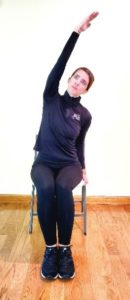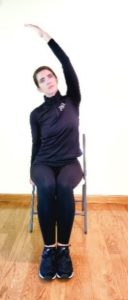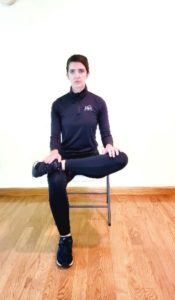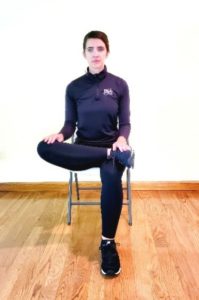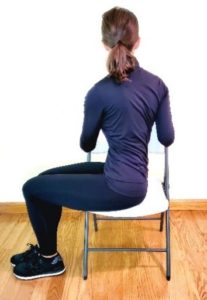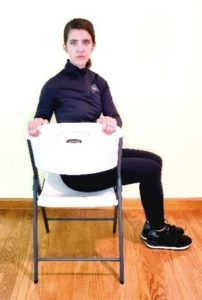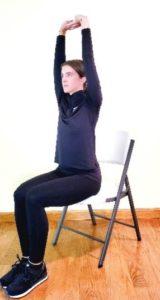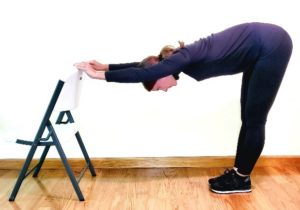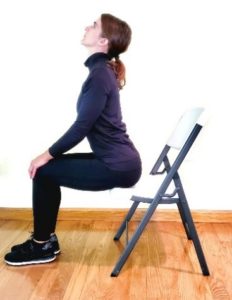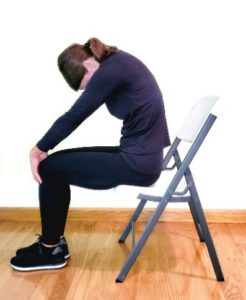Desk Stretching
Read Time: 1 min 39 sec
Many of us with desk jobs spend several hours each day sitting at a desk or in front of a computer. Sitting in the same position for too long and doing the same repetitive motions, such as typing on a keyboard, can result in muscle or joint soreness that simple stretches can help relieve. Stretches allow your muscles to move in all directions. This improves flexibility and promotes healing, posture, and balance. It is a great idea to take time throughout the day to give your body a stretch. While stretching, focus on deep, relaxing breaths and gentle but firm movements. Beginners should try to hold the stretch for about 15 seconds and repeat each stretch two to four times.
Simple Desk Stretches for at Home or in the Office
SIDE STRETCH
Sit with feet flat on the floor. Grab the chair with one hand, begin to stretch up and then over to your comfort level. You should feel the stretch in your armpit and rib cage. Repeat on the other side.
LEG & HIP STRETCH
Sit with one foot flat on the floor (leg should be at a 90-degree angle). Gently bring your other leg up and place the ankle on top of the knee. Apply gentle pressure to the knee that is raised for a stretch. You should feel this stretch in the leg and hip area. Repeat on other side.
SEATED TWIST STRETCH
Place legs off to one side of your chair. Place hands on the back of the chair. While sitting up straight, gently twist, keeping both buttocks and legs rooted on the chair. You should feel this stretch open the hips and legs slightly. Repeat on the other side.
FOREARM & WRIST STRETCH
With both feet firmly planted on the floor and sitting up straight, interlock fingers. Gently raise arms above head (and even slightly behind ears if possible) to feel a nice stretch in the arms and shoulders.
FORWARD FOLD
With a slight bend in your knees, place hands on the back of a chair forming a 90-degree angle with your body. While keeping your back straight, gently push your chest towards the floor.
SEATED CAT COW
Start by placing feet firmly on the floor and your hands on your knees. Then arch your back and slightly raise your chin to a comfortable position (photo 1). You should feel this stretch in your back. Next, counter this stretch by keeping your hands on your knees and rolling up through your shoulders and looking down at your legs (photo 2). Keep alternating between the two poses to feel a release in your back and shoulders.
Always consult with your physician before starting a new exercise program.
Next Article: Social Media and Mental Health

